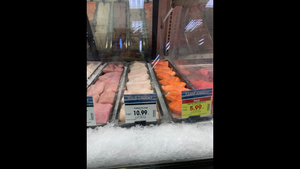Kroger Details Data-Sync Plans
LAS VEGAS — Kroger Co., addressing many of its suppliers at a conference here, outlined an ambitious, multi-year plan to transform how it receives and manages product information.
June 6, 2012
LAS VEGAS — Kroger Co., addressing many of its suppliers at a conference here, outlined an ambitious, multi-year plan to transform how it receives and manages product information.
The transformation includes the adoption of data synchronization, a master data management system and a number of new merchandising and store applications. The overall program, called Project Mercury, has been several years in the making and will be “the largest IT initiative in the company’s history,” said Greg Menz, enterprise solutions architect for Kroger, in a presentation at GS1 Connect, sponsored by GS1 US, Lawrenceville, N.J.
The program will be tested starting this October with nine categories and rolled out to more than 650 categories over the next three years; it will apply to all Kroger divisions except for Fred Meyer.
In a letter to suppliers handed out at the presentation, Kroger said the program would “help us get your products to market faster, and more efficiently manage item modifications.” For shoppers, the changes will result in fewer POS disruptions, more descriptive receipts and shelf tags and improved product tracking for recalls, the letter said.
Under the new program, suppliers will be encouraged to leverage the Global Data Synchronization Network (GDSN), which links the product databases of suppliers and retailers in a standardized system overseen by GS1, Brussels, when modifying item data or introducing new items. Kroger, through its data pool, 1SYNC, a division of GS1 US, is also establishing a vendor item portal through which GDSN data — as well as a considerable amount of data not supported by GDSN — will flow.
Kroger’s embrace of the GDSN revives an earlier, aborted effort to synchronize data with suppliers in 2004, the year the GDSN was launched. The retail giant is one of the last top-10 food retailing companies on SN’s list of the Top 75 North American Food Retailers to adopt the GDSN for data synchronization, which helps trading partners improve the accuracy of their data and avoid logistical, invoicing and merchandising errors.
About the Author
You May Also Like






